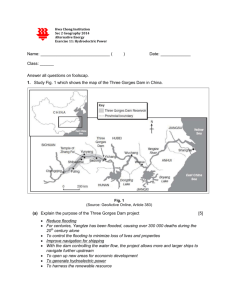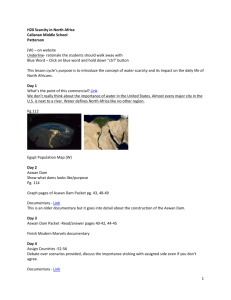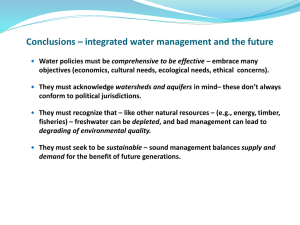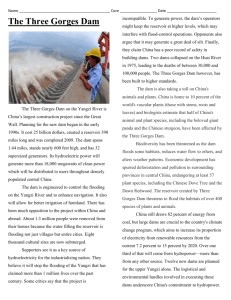Three Gorges Dam, China
advertisement
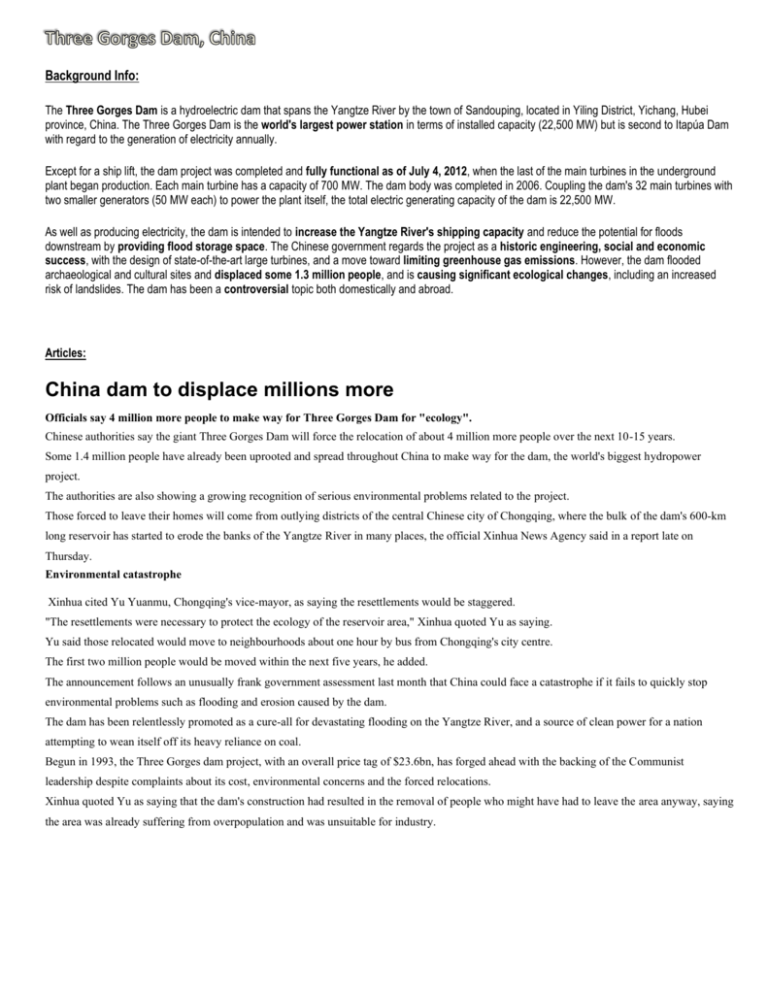
Background Info: The Three Gorges Dam is a hydroelectric dam that spans the Yangtze River by the town of Sandouping, located in Yiling District, Yichang, Hubei province, China. The Three Gorges Dam is the world's largest power station in terms of installed capacity (22,500 MW) but is second to Itapúa Dam with regard to the generation of electricity annually. Except for a ship lift, the dam project was completed and fully functional as of July 4, 2012, when the last of the main turbines in the underground plant began production. Each main turbine has a capacity of 700 MW. The dam body was completed in 2006. Coupling the dam's 32 main turbines with two smaller generators (50 MW each) to power the plant itself, the total electric generating capacity of the dam is 22,500 MW. As well as producing electricity, the dam is intended to increase the Yangtze River's shipping capacity and reduce the potential for floods downstream by providing flood storage space. The Chinese government regards the project as a historic engineering, social and economic success, with the design of state-of-the-art large turbines, and a move toward limiting greenhouse gas emissions. However, the dam flooded archaeological and cultural sites and displaced some 1.3 million people, and is causing significant ecological changes, including an increased risk of landslides. The dam has been a controversial topic both domestically and abroad. Articles: China dam to displace millions more Officials say 4 million more people to make way for Three Gorges Dam for "ecology". Chinese authorities say the giant Three Gorges Dam will force the relocation of about 4 million more people over the next 10-15 years. Some 1.4 million people have already been uprooted and spread throughout China to make way for the dam, the world's biggest hydropower project. The authorities are also showing a growing recognition of serious environmental problems related to the project. Those forced to leave their homes will come from outlying districts of the central Chinese city of Chongqing, where the bulk of the dam's 600-km long reservoir has started to erode the banks of the Yangtze River in many places, the official Xinhua News Agency said in a report late on Thursday. Environmental catastrophe Xinhua cited Yu Yuanmu, Chongqing's vice-mayor, as saying the resettlements would be staggered. "The resettlements were necessary to protect the ecology of the reservoir area," Xinhua quoted Yu as saying. Yu said those relocated would move to neighbourhoods about one hour by bus from Chongqing's city centre. The first two million people would be moved within the next five years, he added. The announcement follows an unusually frank government assessment last month that China could face a catastrophe if it fails to quickly stop environmental problems such as flooding and erosion caused by the dam. The dam has been relentlessly promoted as a cure-all for devastating flooding on the Yangtze River, and a source of clean power for a nation attempting to wean itself off its heavy reliance on coal. Begun in 1993, the Three Gorges dam project, with an overall price tag of $23.6bn, has forged ahead with the backing of the Communist leadership despite complaints about its cost, environmental concerns and the forced relocations. Xinhua quoted Yu as saying that the dam's construction had resulted in the removal of people who might have had to leave the area anyway, saying the area was already suffering from overpopulation and was unsuitable for industry. Three Gorges Dam: drought maker or breaker? A 200-day drought in central China ignites debate among experts about impact of the dam on local weather systems. Completed in 2005, the Three Gorges Dam of central China was hailed as being able to regulate the water levels of the Yangtze River, ease cross-country navigation, and guarantee irrigation for downstream farmers, while also helping to minimise disastrous flooding that the Yangtze was known for. But a 200-day drought in central China has provoked a major debate among scientists and researchers about the impact of the dam on local weather systems. Experts say that the 600km reservoir required to serve the 26 turbines of the dam could be partly to blame, preventing considerable amounts of water from flowing downstream. Other environmentalists and climate specialists have said that the giant reservoir acts like a massive heat reflector, affecting the microclimate of the region. They claim that it is raising the local temperatures and reducing the potential rainfall. Scientists also point out that the sacrifice of forests and farmlands that are now under water also result in the loss of helpful carbon dioxide absorbers. Government officials have a different answer for the drought. Government meteorologists are saying that the seasonal high pressure from the northwest Pacific was weaker and more easterly than normal, thus making it difficult for cold fronts to reach the downstream areas of the Yangtze. Zheng Shouren of the China Academy of Engineering told the official Xinhua news agency that the drought would have been much worse if not for the Three Gorges dam releasing billions of cubic metres of water downstream. But this also comes at a cost. Reduced water levels in the reservoir mean energy production may be cut. From a meteorological standpoint, six years is a relatively short time to decide which side of the argument is right. More time and more study will be needed to determine if the Three Gorges Dam is a drought maker or a drought breaker. CHINA OPENS WORLD’S LARGEST DAM --By Annie Schleicher, Online NewsHour June 18, 2003 Hoping for increased trade and a solution to years of flooding, China this week opened the Three Gorges Dam, a $24 billion project that has led to criticism over the displacement of more than one million residents. Each year from June to September the monsoon season strikes Central China. The massive rainfall floods the great Yangtze River basin, home to millions of people. In 1998, in some of the worst flooding in recent years, more than 2,000 people died and almost 14 million were left homeless. By the end of the rainy season, the rising waters had impacted some 240 million Chinese, close to the population of the entire United States. China needed a solution to this costly problem. As far back as 1919 Sun Yat-sen, the father of modern China, envisioned a dam that would control this chronic flooding, as well as harness the power of the historically unpredictable 3,700 mile-long Yangtze River, the thirdlargest river in the world. But it was only in the 1980s that Chinese leaders seriously proposed such a large project. Construction on the Three Gorges Dam began in 1993. The dam is located 1,000 miles north of Shanghai, China’s largest city and a principal seaport. At this location, the river runs through three spectacular gorges -- narrow steep canyons -- at the foot of the western Wu Shan Mountains. It will be the world's largest dam, spanning 1.4 miles long and 630 feet high. The dam will produce a giant lake or reservoir more than 350 miles long and able to hold over one trillion gallons of water. A great nation moving forward The project, and its more than $24 billion price tag, has been controversial since its inception. Chinese leaders claim that the dam will generate income for China’s interior provinces through the sale of electricity and the ability of large 10,000-ton ocean vessels to travel a thousand miles inland to the city of Chongqing. Chinese leaders see the dam as a key to the modernization of China and as a symbol of the power of China. “Successful completion of water storage means the Three Gorges Project has overcome the first challenge of nature,” chief engineer Zhang Chaoran told the state-owned Xinhua News Agency. Environmental and social impact Critics claim that a much smaller project could have accomplished the same goals at a much smaller cost to the environment and people living in the region. Creating the dam’s reservoir will swallow towns, villages and farmland as well as ancient temples, burial grounds and other historic sites. Spectacular canyons, visited by tourists from around the world, will also end up under water. So far, more than 700,000 residents of the flood path have been resettled and a total of 1.2 million will need new homes by 2009, when the reservoir is filled. Many of those resettled feel cheated by a government that they say promised relocation would improve their lives. More than half of those resettled are farmers. “Instead of fields, we were offered wasteland to farm,” a relocated peasant told The Christian Science Monitor. Environmentalists fear that the dam will create a giant cesspool, filling up with sediment from the deforested slopes of Tibet’s mountains. Also, factories along the Yangtze continue to dump poisonous wastes directly into the river, which, now dammed, is unable to flush the toxins away. “Decades of accumulated trash from villages, hospitals, and cemeteries, including highly toxic waste material from factories and the corpses of millions of poisoned rats, are all still there,” environmentalist Dai Qing told the Christian Science Monitor. Dam opens to some shipping On Monday the area of the Yangtze River affected by the dam opened to shipping in the first passenger test run of the world’s largest hydroelectric project. Shipping had been closed on the river since April 10. "China is opening a critical valve, linking the economic artery of the nation's west with the east,'' said Communications Minister Zhang Chunxian.

